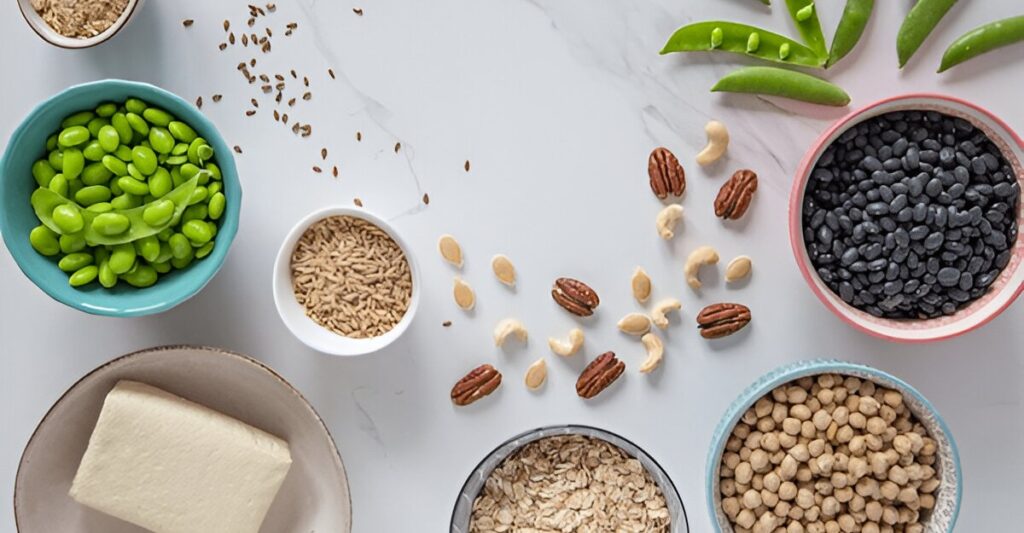Understanding your daily calorie needs is the key to achieving your health and wellness goals, whether you’re aiming to lose weight, maintain your current weight, or gain muscle. But how many calories do you actually need? This daily calorie needs guide breaks down what calories are, how to calculate your needs, and how to use this knowledge for a balanced, healthy diet.
What Are Daily Calorie Needs?
Calories are a measure of energy your body gets from food and drinks. Your daily calorie needs represent the number of calories required to fuel basic bodily functions (like breathing and digestion) and support your daily activities. Everyone’s calorie needs are unique, influenced by factors like age, gender, activity level, and health goals. This daily calorie needs guide will help you estimate your personal requirements and apply them to your eating habits.
Eating the right amount of calories helps you maintain energy, support bodily functions, and avoid overeating or undereating, both of which can impact health.
Why Understanding Daily Calorie Needs Matters
Knowing your daily calorie needs empowers you to make informed food choices. Here’s why it’s important:
- Weight Management: Matching your calorie intake to your needs helps you maintain, lose, or gain weight as desired.
- Energy Balance: Proper calorie intake ensures steady energy without fatigue or sluggishness.
- Nutrient Optimization: Focusing on calorie quality (nutrient-dense foods) supports overall health.
- Disease Prevention: Balanced calorie intake reduces the risk of obesity-related conditions like diabetes and heart disease.
- Personalized Nutrition: Understanding your needs allows you to tailor your diet to your lifestyle and goals.
Without this knowledge, you might consume too many or too few calories, leading to weight gain, nutrient deficiencies, or low energy.
Factors That Affect Daily Calorie Needs
Your daily calorie needs depend on several factors. This daily calorie needs guide outlines the key ones:
1. Basal Metabolic Rate (BMR)
BMR is the number of calories your body needs at rest to maintain basic functions like breathing, heart rate, and cell repair. It accounts for 60–75% of your total calorie needs. BMR varies based on:
- Age: Metabolism slows with age, reducing calorie needs.
- Gender: Men typically have higher BMR due to more muscle mass.
- Body Composition: More muscle mass increases BMR, as muscle burns more calories than fat.
- Height and Weight: Larger bodies require more energy to function.
2. Activity Level
Physical activity significantly impacts your daily calorie needs. The more active you are, the more calories you burn:
- Sedentary: Minimal exercise (e.g., desk job) requires fewer calories.
- Moderately Active: Regular exercise (e.g., walking, gym 3–5 times/week) increases needs.
- Very Active: Intense daily activity (e.g., athletes, manual labor) demands the most calories.
3. Health Goals
Your goals shape your calorie intake:
- Weight Maintenance: Match calories to your total daily energy expenditure (TDEE).
- Weight Loss: Create a calorie deficit (500–750 calories below TDEE) for gradual, sustainable loss (1–1.5 lbs/week).
- Weight Gain: Consume a calorie surplus (250–500 calories above TDEE) to build muscle or gain weight.
4. Other Factors
- Pregnancy/Breastfeeding: Increases calorie needs to support fetal growth or milk production.
- Medical Conditions: Conditions like thyroid disorders or diabetes can alter metabolism.
- Genetics: Some people naturally have faster or slower metabolisms.
How to Calculate Your Daily Calorie Needs
This daily calorie needs guide provides a simple way to estimate your calorie requirements using two steps:
Step 1: Calculate Your BMR
Use the Mifflin-St Jeor Equation, one of the most accurate formulas:
- Men: BMR = (10 × weight in kg) + (6.25 × height in cm) − (5 × age in years) + 5
- Women: BMR = (10 × weight in kg) + (6.25 × height in cm) − (5 × age in years) − 161
Example: A 30-year-old woman, 65 kg, 165 cm tall: BMR = (10 × 65) + (6.25 × 165) − (5 × 30) − 161 = 650 + 1031.25 − 150 − 161 = 1370.25 calories/day
Step 2: Adjust for Activity Level
Multiply your BMR by an activity factor to get your Total Daily Energy Expenditure (TDEE):
- Sedentary (little/no exercise): BMR × 1.2
- Lightly Active (light exercise 1–3 days/week): BMR × 1.375
- Moderately Active (moderate exercise 3–5 days/week): BMR × 1.55
- Very Active (intense exercise 6–7 days/week): BMR × 1.725
- Extremely Active (very intense daily exercise or physical job): BMR × 1.9
Example: If the woman above is moderately active: TDEE = 1370.25 × 1.55 ≈ 2124 calories/day
Step 3: Adjust for Goals
- Maintain Weight: Stick to your TDEE (e.g., 2124 calories).
- Lose Weight: Subtract 500–750 calories (e.g., 1374–1624 calories).
- Gain Weight: Add 250–500 calories (e.g., 2374–2624 calories).
Pro Tip: Online calorie calculators or apps like MyFitnessPal can simplify this process, but double-check inputs for accuracy.
Tips for Meeting Your Daily Calorie Needs
Once you know your daily calorie needs, use these strategies from the daily calorie needs guide to eat healthily:
- Prioritize Nutrient-Dense Foods: Choose whole foods like vegetables, lean proteins, whole grains, and healthy fats to maximize nutrition within your calorie budget.
- Practice Portion Control: Use tools like measuring cups or the hand method (palm for protein, fist for carbs) to avoid overeating.
- Balance Macronutrients: Aim for 45–65% carbs, 10–35% protein, and 20–35% fats for a well-rounded diet.
- Track Your Intake: Use a food diary or app to monitor calories and ensure you’re hitting your target.
- Stay Hydrated: Water supports metabolism and prevents mistaking thirst for hunger. Aim for 8–10 cups daily.
- Eat Mindfully: Chew slowly and avoid distractions to tune into hunger and fullness cues.
Sample Balanced Day (2000 Calories):
- Breakfast: Oatmeal with berries and almond butter (400 calories).
- Lunch: Grilled chicken salad with quinoa and olive oil dressing (600 calories).
- Snack: Greek yogurt with nuts (200 calories).
- Dinner: Salmon, roasted vegetables, and brown rice (600 calories).
- Snack: Apple with peanut butter (200 calories).
Common Mistakes to Avoid
This daily calorie needs guide highlights pitfalls to watch for:
- Underestimating Calories: Hidden calories in sauces, drinks, or snacks can add up. Read labels carefully.
- Overly Restrictive Diets: Cutting calories too low (below 1200 for women or 1500 for men) can harm metabolism and health.
- Ignoring Food Quality: 2000 calories of junk food isn’t the same as 2000 calories of whole foods. Focus on nutrient density.
- Inconsistent Tracking: Skipping days of tracking can lead to inaccurate intake. Be consistent, especially when starting.
Overcoming Challenges
Life can complicate meeting your daily calorie needs. Here’s how to stay on track:
- Busy Schedules: Prep meals in advance or keep portable snacks like fruit or protein bars.
- Dining Out: Check menus online for calorie info, choose grilled or steamed options, and split large portions.
- Cravings: Satisfy urges with small portions of treats (e.g., a square of dark chocolate) within your calorie plan.
- Plateaus: If weight loss stalls, reassess your TDEE (as weight changes, so do calorie needs) or increase activity.
The Long-Term Benefits of Understanding Daily Calorie Needs
Following this daily calorie needs guide offers lasting rewards:
- Sustainable Health: Balanced calorie intake supports weight management without extreme dieting.
- Improved Energy: Proper fueling enhances focus, productivity, and physical performance.
- Better Food Choices: Calorie awareness encourages nutrient-rich eating habits.
- Personal Empowerment: Knowing your needs gives you control over your health journey.
Tips for Beginners
New to this daily calorie needs guide? Start with these steps:
- Calculate Once: Estimate your TDEE and revisit every few months or after major lifestyle changes.
- Track for a Week: Log your food to understand your current intake and adjust as needed.
- Focus on Whole Foods: Build meals around vegetables, lean proteins, and whole grains for satisfaction.
- Be Flexible: Aim for consistency, not perfection. A few off days won’t derail progress.
- Seek Guidance: Consult a dietitian for personalized advice, especially for specific health conditions.
Conclusion
Understanding your daily calorie needs is a powerful step toward a healthier you. By calculating your needs, prioritizing nutrient-dense foods, and practicing mindful eating, you can achieve your goals without feeling deprived. This daily calorie needs guide gives you the tools to start today.
Ready to take action? Calculate your TDEE, plan a balanced meal, or track your intake for a day to kickstart your journey. With the right calorie knowledge, you’re on your way to lasting wellness.



